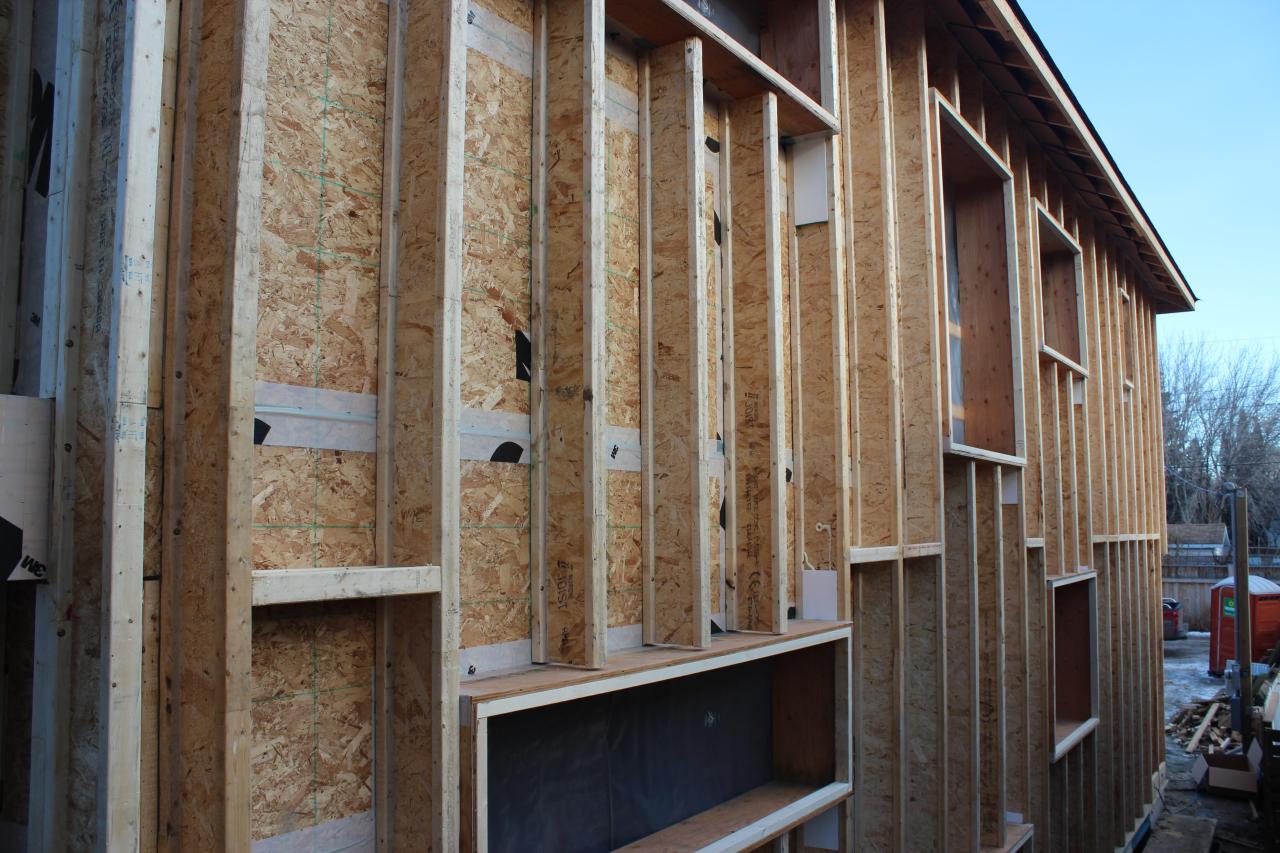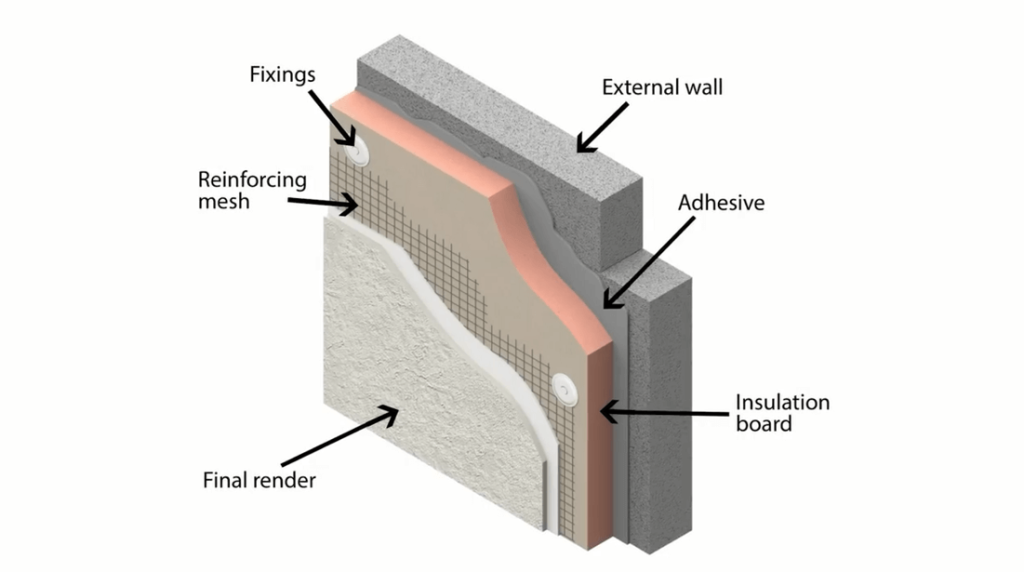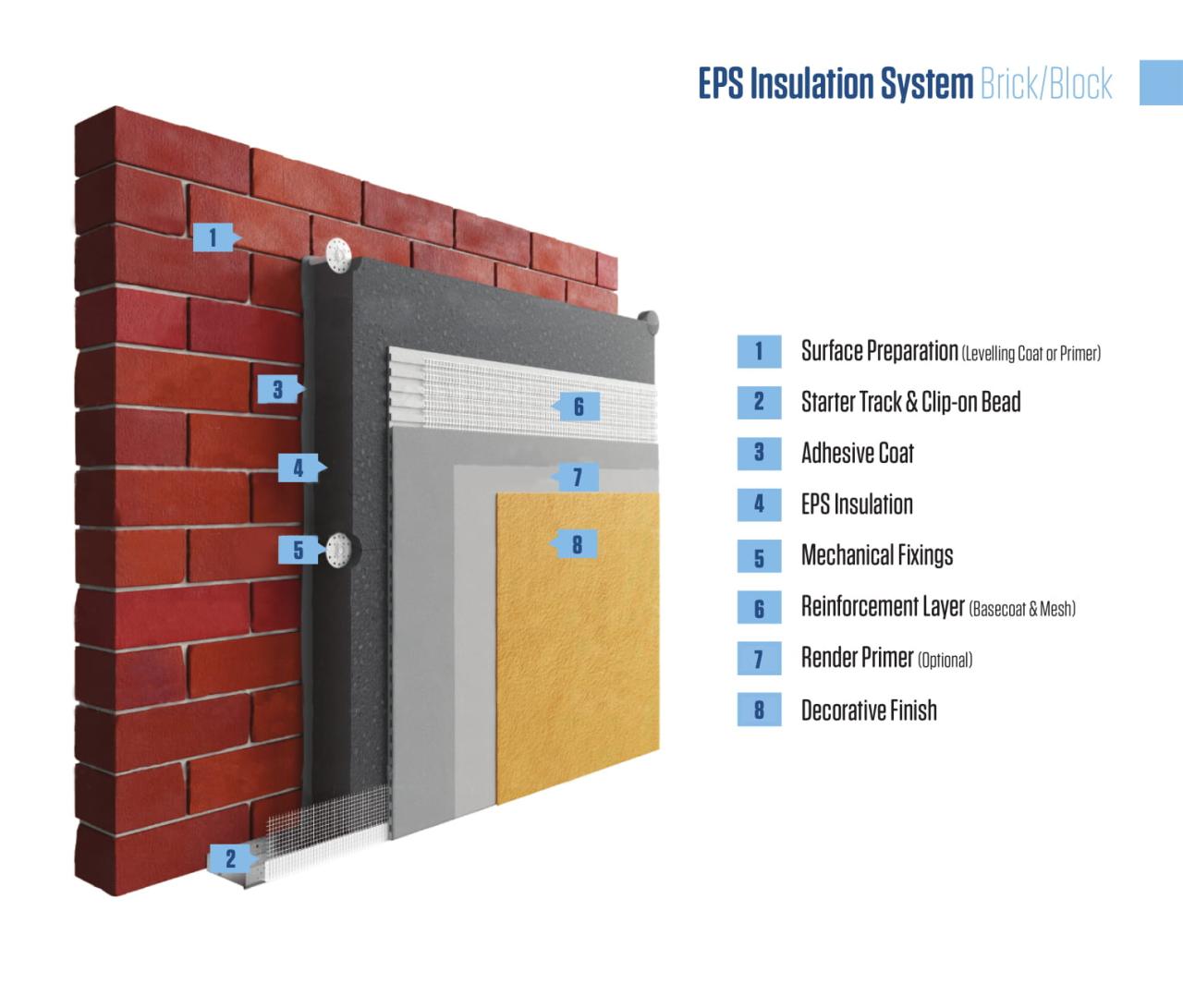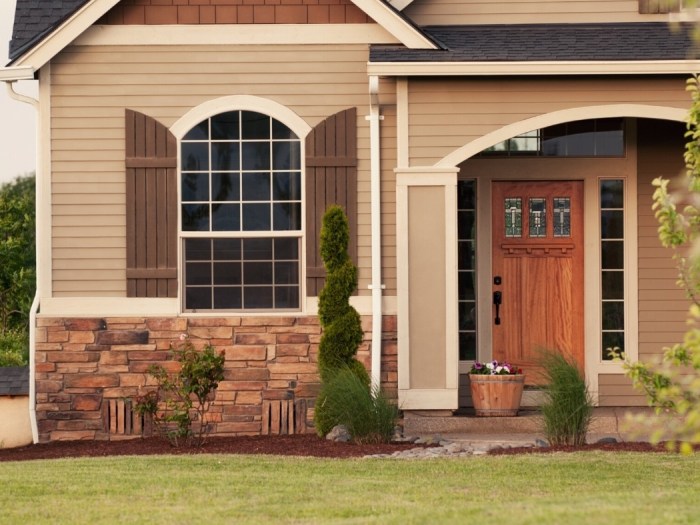Exterior Wall Insulation Systems for Cold Climates: A Comprehensive Guide
Exploring the world of exterior wall insulation systems for cold climates opens up a realm of possibilities. From understanding the importance of insulation to delving into the various materials and installation techniques, this guide will equip you with the knowledge needed to tackle cold weather challenges head-on.
As we unravel the intricacies of exterior wall insulation, you'll discover how these systems can enhance energy efficiency, promote sustainability, and ensure longevity in even the harshest of climates. Let's dive in!
Overview of Exterior Wall Insulation Systems for Cold Climates

Exterior wall insulation systems are designed to provide a barrier against heat loss and cold penetration in buildings located in cold climates. By insulating the exterior walls, these systems help maintain a comfortable indoor temperature, reduce energy consumption, and improve overall building performance.
Definition of Exterior Wall Insulation Systems
Exterior wall insulation systems involve the installation of thermal insulation materials on the outer surface of the building envelope. This helps to create a continuous layer of insulation that minimizes heat transfer through the walls.
Importance of Insulation in Cold Climates
Insulation plays a crucial role in cold climates by preventing heat loss and reducing thermal bridging. This not only helps to keep the interior spaces warm and comfortable but also lowers heating costs and reduces carbon emissions.
Key Components of an Exterior Wall Insulation System
- Insulation Materials: These can include rigid foam boards, mineral wool, or spray foam insulation, chosen for their thermal resistance properties.
- Air and Moisture Barrier: A weather-resistant barrier is essential to prevent air leakage and moisture infiltration, which can compromise the insulation's effectiveness.
- Cladding or Siding: The exterior finish of the building serves both aesthetic and protective functions, shielding the insulation from external elements.
- Ventilation: Proper ventilation systems help regulate indoor air quality and prevent condensation buildup within the wall assembly.
Types of Insulation Materials
When it comes to exterior wall insulation systems for cold climates, choosing the right insulation material is crucial for effective thermal performance. Different types of insulation materials offer varying levels of insulation, durability, and installation ease. Let's explore some common insulation materials suitable for cold climates and compare their effectiveness.
Fiberglass Insulation
Fiberglass insulation is a popular choice for cold climates due to its affordability and relatively good thermal performance. It is made of tiny glass fibers and comes in blanket or loose-fill form.
- Pros:
- Good thermal resistance- Resistant to mold and moisture - Fire-resistant
- Cons:
- Can irritate the skin, eyes, and respiratory system during installation- May settle over time, reducing effectiveness
Mineral Wool Insulation
Mineral wool insulation, made from natural or recycled minerals like rock or slag, is another excellent choice for cold climates. It offers superior fire resistance and sound absorption properties.
- Pros:
- Excellent fire resistance- Resistant to mold, mildew, and pests - Good thermal performance
- Cons:
- Higher cost compared to fiberglass- Requires special handling due to its density
Foam Board Insulation
Foam board insulation, typically made of polystyrene or polyurethane, provides high thermal resistance and moisture resistance. It comes in rigid panels that are easy to install.
- Pros:
- High thermal resistance- Moisture-resistant - Lightweight and easy to install
- Cons:
- More expensive than other insulation materials- Susceptible to damage from UV exposure
Installation Techniques
Installing exterior wall insulation is a crucial step in improving energy efficiency and comfort in cold climates. Proper installation techniques are essential to ensure the effectiveness of the insulation and to prevent any issues in the future.
Preparing the Wall Surface
- Begin by cleaning the wall surface thoroughly to remove any dirt, dust, or debris. This will help the insulation adhere properly to the wall.
- Repair any cracks or damage to the wall before installing the insulation to ensure a smooth surface.
- Air sealing is important to prevent air leaks and drafts. Use caulk or foam to seal any gaps or openings in the wall.
Step-by-Step Installation Process
- Measure and cut the insulation material to fit the wall dimensions accurately.
- Apply adhesive or fasteners to secure the insulation panels to the wall surface.
- Install a weather-resistant barrier over the insulation to protect it from moisture and other weather elements.
- Finish the installation by adding a protective covering or siding material over the insulation.
Common Challenges and Solutions
- Moisture issues: Properly seal the insulation and use moisture-resistant materials to prevent moisture buildup.
- Uneven surfaces: Address uneven surfaces by using additional materials to create a smooth base for the insulation.
- Air leaks: Conduct a thorough inspection to identify and seal any air leaks to maximize the insulation's efficiency.
Energy Efficiency Benefits
Exterior wall insulation systems play a crucial role in improving energy efficiency in cold climates by providing a thermal barrier that helps retain heat within a building.
Examples of Energy Savings
- Properly insulated exterior walls can lead to significant reductions in heating costs during the winter months.
- Studies have shown that homes with effective insulation can save up to 30% on energy bills compared to those without insulation.
- Commercial buildings with proper exterior wall insulation have reported lower energy consumption and reduced carbon emissions.
Environmental Impact
Using insulation to reduce energy consumption not only results in cost savings for homeowners and businesses but also has a positive impact on the environment.
By lowering the demand for heating, exterior wall insulation systems help reduce the reliance on fossil fuels, leading to a decrease in greenhouse gas emissions.
Maintenance and Longevity

Maintaining exterior wall insulation systems in cold climates is crucial for ensuring their longevity and optimal performance. By following proper maintenance practices and addressing any signs of damage promptly, you can extend the lifespan of the insulation materials effectively.
Regular Inspection and Maintenance
- Regularly inspect the exterior walls for any signs of damage, such as cracks, gaps, or moisture intrusion.
- Ensure that the insulation materials are properly sealed and in good condition to prevent air leaks and heat loss.
- Check for any pest infestations that can compromise the integrity of the insulation system.
Addressing Signs of Damage
- If you notice any signs of damage, such as water stains or mold growth, address them immediately to prevent further deterioration.
- Repair any cracks or gaps in the insulation system to maintain its effectiveness in cold climates.
- Replace any damaged insulation materials promptly to prevent heat loss and maintain energy efficiency.
Tips for Extending Lifespan
- Ensure proper drainage around the exterior walls to prevent water infiltration and damage to the insulation materials.
- Consider adding an additional protective layer, such as a weather-resistant barrier, to shield the insulation from harsh weather conditions.
- Regularly clean and maintain the exterior walls to prevent debris buildup that can affect the insulation system.
Conclusion

In conclusion, exterior wall insulation systems for cold climates offer a multitude of benefits, ranging from energy efficiency improvements to increased durability. By implementing the right materials and techniques, you can create a comfortable and sustainable living environment, regardless of the external temperature.
Embrace the power of insulation and transform your space today.
FAQs
What are the key components of an exterior wall insulation system?
The key components include insulation material, air barriers, vapor barriers, and cladding.
How can I extend the lifespan of insulation materials in cold climates?
Regular inspections, prompt repairs of any damage, and proper ventilation can help extend the lifespan of insulation materials.
What are the common challenges faced during the installation of exterior wall insulation?
Common challenges include moisture issues, ensuring proper sealing, and addressing thermal bridging.




